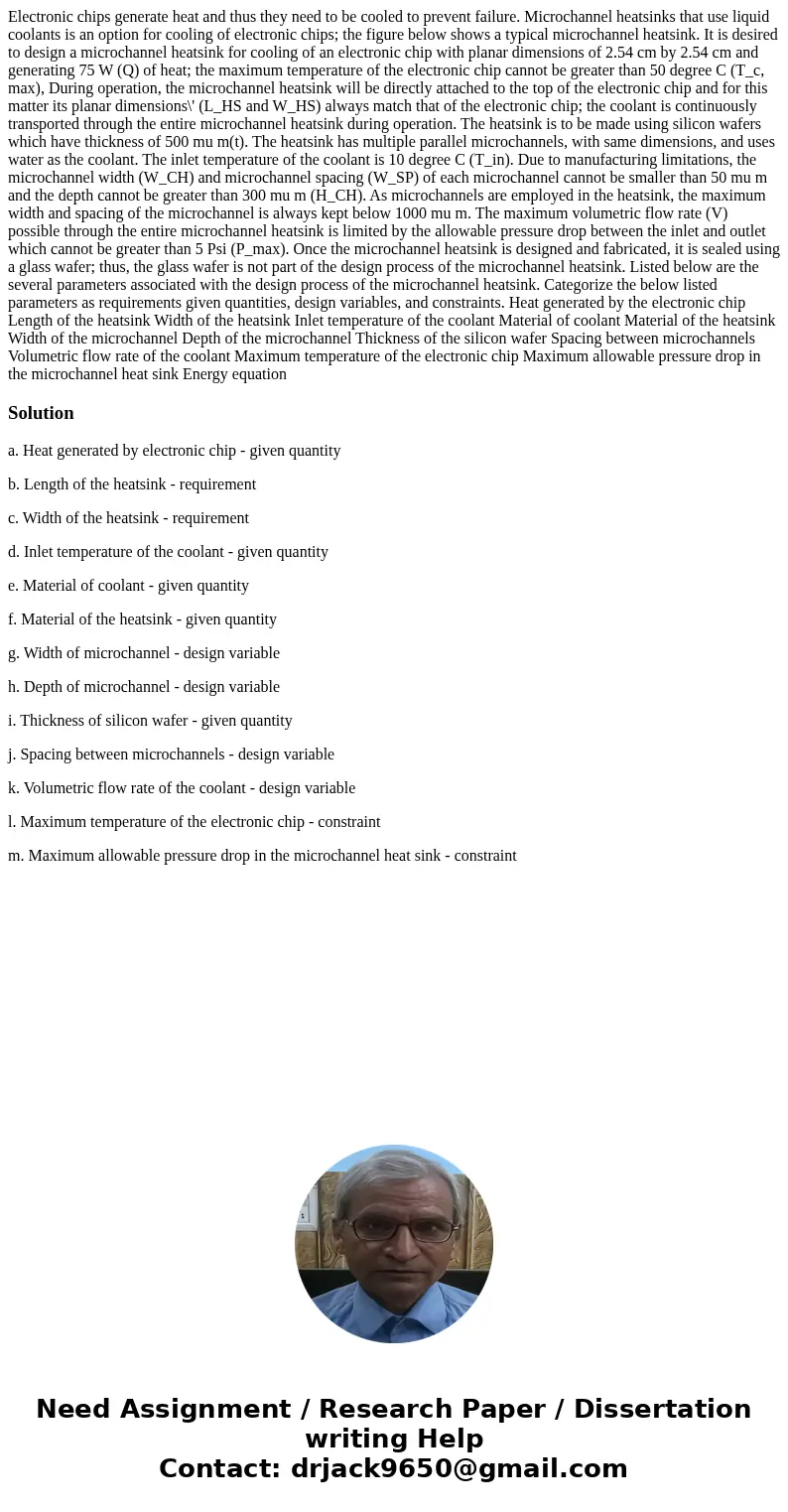Electronic chips generate heat and thus they need to be cool
Electronic chips generate heat and thus they need to be cooled to prevent failure. Microchannel heatsinks that use liquid coolants is an option for cooling of electronic chips; the figure below shows a typical microchannel heatsink. It is desired to design a microchannel heatsink for cooling of an electronic chip with planar dimensions of 2.54 cm by 2.54 cm and generating 75 W (Q) of heat; the maximum temperature of the electronic chip cannot be greater than 50 degree C (T_c, max), During operation, the microchannel heatsink will be directly attached to the top of the electronic chip and for this matter its planar dimensions\' (L_HS and W_HS) always match that of the electronic chip; the coolant is continuously transported through the entire microchannel heatsink during operation. The heatsink is to be made using silicon wafers which have thickness of 500 mu m(t). The heatsink has multiple parallel microchannels, with same dimensions, and uses water as the coolant. The inlet temperature of the coolant is 10 degree C (T_in). Due to manufacturing limitations, the microchannel width (W_CH) and microchannel spacing (W_SP) of each microchannel cannot be smaller than 50 mu m and the depth cannot be greater than 300 mu m (H_CH). As microchannels are employed in the heatsink, the maximum width and spacing of the microchannel is always kept below 1000 mu m. The maximum volumetric flow rate (V) possible through the entire microchannel heatsink is limited by the allowable pressure drop between the inlet and outlet which cannot be greater than 5 Psi (P_max). Once the microchannel heatsink is designed and fabricated, it is sealed using a glass wafer; thus, the glass wafer is not part of the design process of the microchannel heatsink. Listed below are the several parameters associated with the design process of the microchannel heatsink. Categorize the below listed parameters as requirements given quantities, design variables, and constraints. Heat generated by the electronic chip Length of the heatsink Width of the heatsink Inlet temperature of the coolant Material of coolant Material of the heatsink Width of the microchannel Depth of the microchannel Thickness of the silicon wafer Spacing between microchannels Volumetric flow rate of the coolant Maximum temperature of the electronic chip Maximum allowable pressure drop in the microchannel heat sink Energy equation
Solution
a. Heat generated by electronic chip - given quantity
b. Length of the heatsink - requirement
c. Width of the heatsink - requirement
d. Inlet temperature of the coolant - given quantity
e. Material of coolant - given quantity
f. Material of the heatsink - given quantity
g. Width of microchannel - design variable
h. Depth of microchannel - design variable
i. Thickness of silicon wafer - given quantity
j. Spacing between microchannels - design variable
k. Volumetric flow rate of the coolant - design variable
l. Maximum temperature of the electronic chip - constraint
m. Maximum allowable pressure drop in the microchannel heat sink - constraint

 Homework Sourse
Homework Sourse